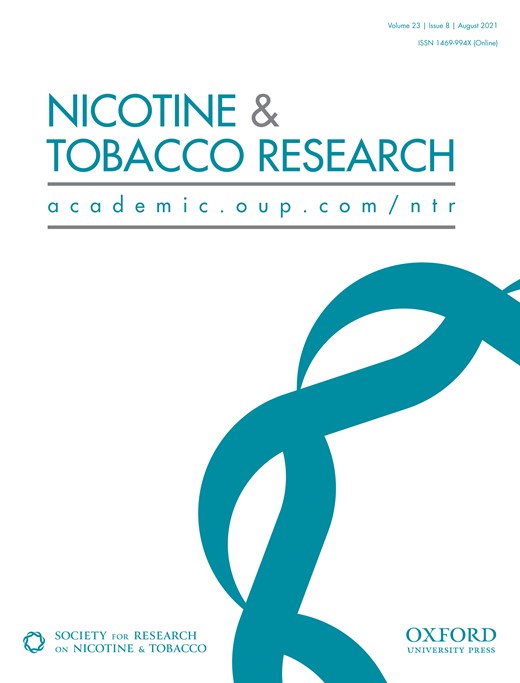-
Views
-
Cite
Cite
Dale S Mantey, Onyinye Omega-Njemnobi, Cristina S Barroso, Secondhand Smoke Exposure at Home and/or in a Vehicle: Differences Between Urban and Non-Urban Adolescents in the United States, From 2015 to 2018, Nicotine & Tobacco Research, Volume 23, Issue 8, August 2021, Pages 1327–1333, https://doi.org/10.1093/ntr/ntaa222
Close - Share Icon Share
Abstract
Secondhand smoke exposure during adolescence is linked to increased risk for cigarette smoking susceptibility and initiation. Non-urban youth may encounter a disproportionate number social and environmental risk factors for secondhand smoke exposure. Research is needed to explore geographic disparities in secondhand smoke exposure.
Four years of National Youth Tobacco Survey (2015–2018) data were pooled. Participants were 69 249 middle and high school students. Multivariable logistic regression examined the relationship between geographic region and secondhand smoke exposure (1) at home and (2) in a vehicle. A multivariable, multinomial logistic regression examined the relationship between geographic region and number of sources of secondhand smoke exposure (ie, 0, 1 source, 2 sources). Covariates included sex, race/ethnicity, grade level, past 30-day tobacco use, and living with a tobacco user.
From 2015 to 2018, ~28.4% of middle and high school students reported secondhand smoke exposure either at home, in a vehicle, or both. Non-urban youth had greater odds of reporting secondhand smoke exposure at home (Adj OR: 1.26; 95% CI: 1.15 to 1.38) and in a vehicle (Adj OR: 1.50; 95% CI: 1.35 to 1.65), compared with urban youth. Similarly, non-urban youth had greater odds of reporting secondhand smoke exposure via one source (RRR: 1.21; 95% CI: 1.11 to 1.31) and two sources (RRR: 1.61; 95% CI: 1.42 to 1.82), relative to no exposure, than urban youth.
Secondhand smoke exposure at home and/or in a vehicle varies across geographic region. Targeted interventions should be developed and implemented to reduce secondhand smoke exposure among at-risk youth.
Findings showcase the need to address secondhand smoke exposure in non-urban areas and how it impacts adolescents. Public health interventions and regulatory policies aimed at improving social norms and expanding health infrastructure in rural communities should be designed and implemented in order to prevent and reduce secondhand smoke exposure among non-urban youth.






Comments